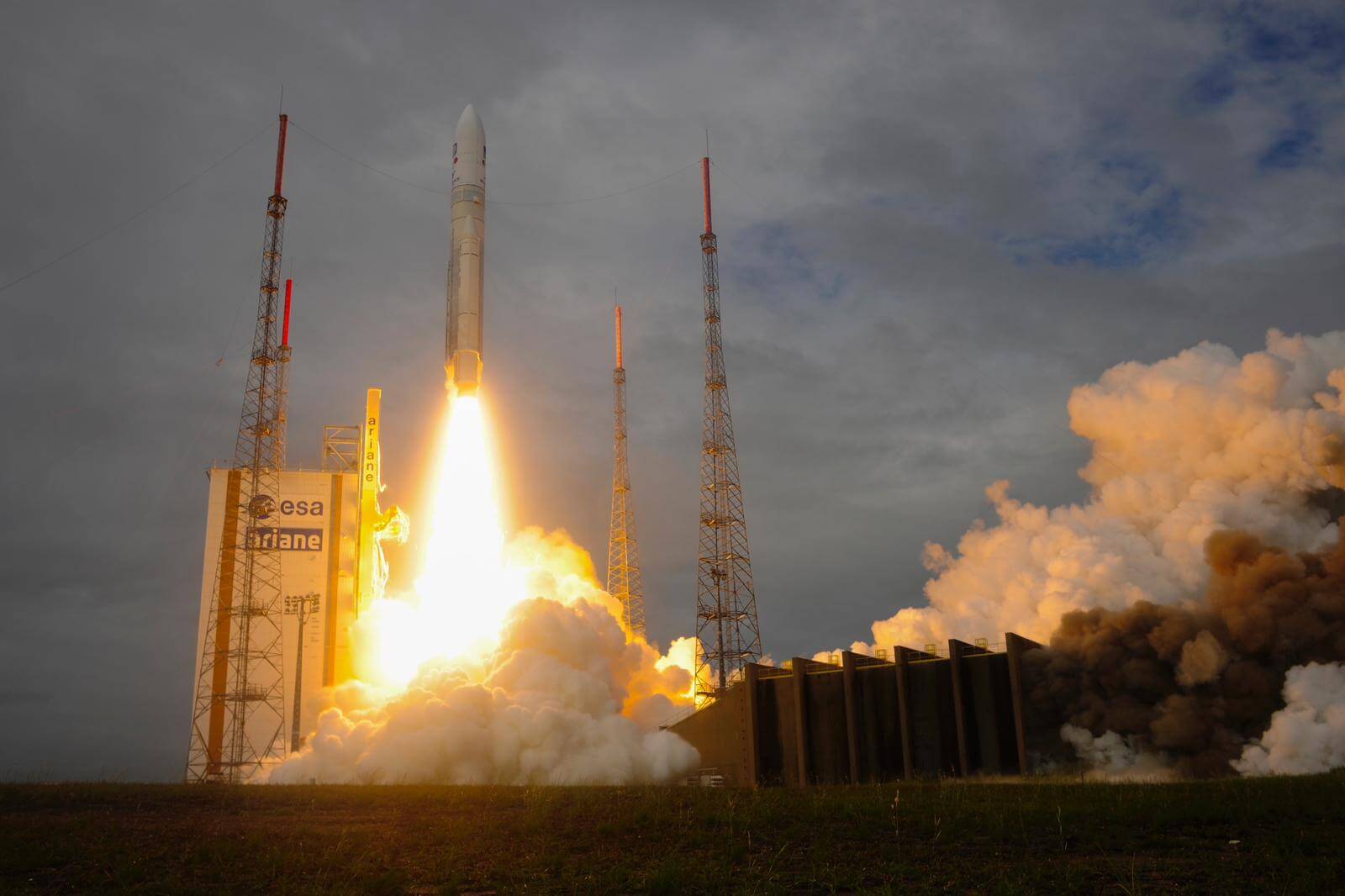The European Space Agency's new major interplanetary exploration mission was successfully launched on April 14 by Ariane 5. Objective: the giant Jupiter and its icy moons, which will be reached... in 2031.
Perfect liftoff
The Juice (Jupiter Icy Moons Explorer) probe from the European Space Agency lifted off on April 14 at 12:14 p.m. UTC, after a 24 hour postponement caused by lightning hazards.
Target : Jupiter, the largest planet in the solar system, more than 600 million km away from Earth, and three of its icy moons.
The launch was carried out by the penultimate Ariane 5 launch vehicle (mission VA260), operating from the Guyana Space Center.
His mission lasted 27 minutes and 45 seconds, with separation from the probe occurring at 1 538 km altitude.
3.5 years in the Jupiter system
At the end of an eight year journey, which includes gravity-assist maneuvers near Earth, the Moon and Venus, Juice will orbit Jupiter.
The probe will then make 35 flybys of the moons Europe, Ganymede and Callisto (in order of distance from Jupiter).
Then it will crash on Ganymede in late 2035.
11 equipments associating 19 countries
The Juice probe embarks ten scientific instruments, plus an experiment to link the onboard communication system with Earth-based radio telescopes, as well as a German radiation monitor : it is the most powerful scientific payload ever sent to this region of the solar system.
The mission involves fifteen European countries, Canada, the United States, Japan and Israel.
France, via the Cnes, which is officiating as prime contractor, is participating in six experiments out of ten. Fifteen national laboratories, including nine in instrumental development, are thus involved, out of about fifty.
80 European companies
Juice is an imposing 4.35 m high probe, which weighs 5 963 kg at liftoff.
It was built by 80 European companies, under the responsibility of Airbus Defence and Space in Toulouse.
In particular, it is equipped with the largest solar panel assembly ever made for an interplanetary spacecraft : 27 m from one end to the other (the length of a basketball court).
Découvrez cet article sur Air&Cosmos

